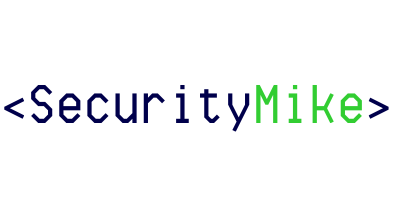Everyone knows that interviews differ, but when you’ve been through a few, you notice what they’re looking for. Here, I’ve compiled a list of information to prepare for an interview.
CIA Triad
The CIA Triad is a foundational model in cybersecurity, comprising Confidentiality, Integrity, and Availability, to guide organizational security policies.
- Confidentiality prevents unauthorized access by employing encryption, access controls, and authentication to protect sensitive information.
- Integrity ensures data accuracy and reliability through the use of checksums, digital signatures, and audit trails to prevent unauthorized alterations.
- Availability maintains information accessibility for authorized users, utilizing redundancy, software updates, and disaster recovery plans to mitigate interruptions.
The importance of each component varies by industry and organizational needs:
- Confidentiality is crucial in sectors like finance and healthcare to meet legal standards (GDPR, HIPAA).
- Integrity is vital where data accuracy is essential, such as in legal or scientific research, to avoid incorrect outcomes or legal issues.
- Availability is key for services requiring constant uptime, like online banking or e-commerce, where downtime affects revenue and trust.
A balanced approach to all three is necessary for a comprehensive security strategy. For instance, encryption enhances both confidentiality and integrity by restricting access and detecting tampering. Balancing confidentiality with availability ensures data is secure yet accessible, and integrity with availability ensures data is accurate and available when needed. Effective security strategies consider the entire triad, as overemphasizing one aspect can compromise the others, illustrating the need for a nuanced understanding of their interplay to protect information assets effectively.
TCP/IP and OSI Model Layers
- Physical Layer (OSI Layer 1)
- Function: Deals with the physical connection between devices and the transmission and reception of raw binary data over a physical medium.
- TCP/IP Relation: Corresponds to the Link Layer in TCP/IP, focusing on hardware addressing and the physical transmission of data.
- Data Link Layer (OSI Layer 2)
- Function: Provides node-to-node data transfer and error correction from the physical layer.
- TCP/IP Relation: Part of the Link Layer in TCP/IP, responsible for access control to the physical medium and error detection and correction.
- Network Layer (OSI Layer 3)
- Function: Manages device addressing, path selection, and routing through intermediate routers.
- TCP/IP Relation: Matches the Internet Layer in TCP/IP, focusing on logical addressing and routing.
- Transport Layer (OSI Layer 4)
- Function: Ensures reliable data transfer between end systems and is responsible for end-to-end error recovery and flow control.
- TCP/IP Relation: Maps directly to the Transport Layer in TCP/IP, encompassing protocols like TCP and UDP.
- Session Layer (OSI Layer 5)
- Function: Manages sessions between applications.
- TCP/IP Relation: Integrated into the Application Layer in TCP/IP, which is broader and encompasses functionalities of the OSI model’s session, presentation, and application layers.
- Presentation Layer (OSI Layer 6)
- Function: Translates, encrypts, or compresses data for the application layer.
- TCP/IP Relation: Incorporated in the TCP/IP Application Layer, including encryption, compression, and data translation services.
- Application Layer (OSI Layer 7)
- Function: Interacts with software applications to provide network services.
- TCP/IP Relation: Directly corresponds to the Application Layer in TCP/IP, encompassing high-level APIs like resource sharing and remote file access.
Other Security Basics
- Understanding Technology Abuse: Learn how the technology you know can be abused and gain an overall understanding of how to mitigate risks associated with its abuse.
- Differences between Encoding, Encryption, and Hashing:
- Encoding transforms data into a different format using publicly available schemes for compatibility and interoperability. It’s reversible if the encoding scheme is known.
- Encryption secures data by making it unreadable without a specific key, using cryptographic algorithms. It’s reversible only with the correct key.
- Hashing generates a fixed-size string from data for integrity and authenticity checks, using hash functions. It’s not reversible, meaning the original data can’t be obtained from the hash.
- Explain Cross-Site Scripting (XSS): Imagine a notebook where you and your friends write messages to each other. Suppose someone sneaks in a note that says, “When you read this, pass me your dessert.” If you do what the note says without thinking, the sneaky person gets your dessert. XSS is similar but occurs on websites, where a bad script inserted into a website leads to users’ computers following harmful instructions, potentially exposing secrets like passwords.
Personal Projects and Security
Describe Your Home Network Setup:
- Network Segmentation: Dividing the network into separate segments to limit access and reduce the impact of breaches.
- Two-Factor Authentication (2FA): Using 2FA for an extra layer of security beyond just passwords.
- Password Managers: Employing a password manager to generate and store complex, unique passwords for every service.
- VPN for Secure Remote Access: Utilizing a VPN to securely access the home network from external locations.
- Regular Updates and Patch Management: Keeping all devices and software up-to-date with the latest security patches.
- Home Lab and Services: Configuring services with security in mind, including service isolation, secure configuration, and monitoring/logging for quick incident response.
Conclusion
In conclusion, preparing for a cybersecurity interview involves a broad understanding of key concepts, frameworks, and technologies fundamental to the field, such as the CIA Triad, TCP/IP and OSI model layers, and practical strategies for securing both organizational and personal networks. Understanding the intricacies of confidentiality, integrity, and availability, along with the technical details of network layers and cybersecurity best practices, forms the basis for a robust cybersecurity skill set. Additionally, real-world applications of these principles, such as in personal network security setups featuring network segmentation, two-factor authentication, password managers, VPNs, and regular updates, demonstrate a comprehensive approach to cybersecurity. By mastering these concepts and being able to discuss practical applications and defenses against potential abuses of technology, candidates can show their readiness to tackle cybersecurity challenges in professional environments.


Pingback: Deciphering the Digital: A Guide to Understanding Today's Cybersecurity Threats - SecurityMike
Pingback: Cyber Hygiene: Daily Habits to Keep Your Data Safe - SecurityMike
Pingback: The Colonial Pipeline Cyber Attack: A Case Study of Ransomware in Action - SecurityMike
Pingback: Advanced Persistent Threats: Identifying and Mitigating Long-term Risks - SecurityMike
Pingback: Anatomy of a Cyber Attack: A Step-by-Step Breakdown - SecurityMike